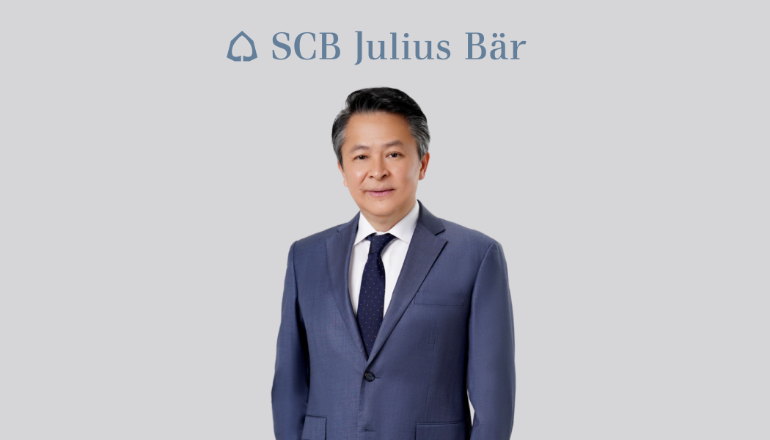
Francesco de Ferrari wears many hats at Credit Suisse (CS) as managing director, head of private banking Asia Pacific, and CEO Southeast Asia and Frontier Markets. During his leadership tenure, the private bank has almost doubled its assets under management and quintupled profits in APAC. Meghna Mukerjee has a candid chat with the CS veteran
Francesco de Ferrari wears many hats at Credit Suisse (CS) as managing director, head of private banking Asia Pacific, and CEO Southeast Asia and Frontier Markets. A CS veteran for 15 years, Ferrari came into his present role in January 2012 (the CEO Southeast Asia and Frontier Markets role being added in 2015).
During his leadership tenure, the private banking business in APAC has experienced steady growth, having more than doubled its assets under management (AuM) and quintupled profits.
In 2015, Credit Suisse appointed a new CEO (Tidjane Thiam) and developed a new operating model for the APAC unit as part of the new strategy, which has given the private bank a regional advantage.
Alongside consistent profits in core markets, the bank is investing in emerging economies, launching new offices, and also staying at the forefront of technology innovation – the latest being the launch and enhancement of the digital private banking platform, the fintech partnership around the Canopy service and digital client onboarding.
How well do you really know your competitors?
Access the most comprehensive Company Profiles on the market, powered by GlobalData. Save hours of research. Gain competitive edge.

Thank you!
Your download email will arrive shortly
Not ready to buy yet? Download a free sample
We are confident about the unique quality of our Company Profiles. However, we want you to make the most beneficial decision for your business, so we offer a free sample that you can download by submitting the below form
By GlobalDataMeghna Mukerjee gets all the details from Ferrari in a candid chat.
What are the biggest opportunities and challenges in the private banking market in Asia?
Asia is generally always portrayed to be one of the wealthiest if not the wealthiest regions in the world. Almost 60% to 70% of new wealth growth is going to come from Asia. It is definitely an attractive region for private banking and wealth creation.
The challenges are that Asia is not one region. It’s not uniform. Each country is at a different stage of its lifecycle. The operating model you need to capture this opportunity is complex. A lot of banks struggle to cover the breadth of the Asia opportunity. That’s why, over the last six years that I have been doing this job, there has been significant consolidation in the industry.
Another clear challenge is the availability of talent to grow and develop the businesses in APAC.
Additionally, most of the clients in Asia Pacific (APAC) tend to be first generation entrepreneurs, and most of the wealth is getting created by family-run businesses. It is different to what happens in other parts of the world. If you look at the family controlled businesses with a market-cap of at least $1bn globally, approximately 80% of them are APAC based. Clients here are particular about how you serve them.
We have one of the most comprehensive footprints among the international private banks in the region.
We operate out of three booking hubs – Singapore, Hong Kong and Zurich – to cover APAC clients. Singapore is our largest private banking office outside of Switzerland. We also have domestic banks in Japan, India and Australia, and we launched an onshore Thailand office in 2016.
Could you tell us more about the new Thailand operations?
Whenever you operate onshore as a global private bank, you better have a convincing answer for the question ‘why should a client give you money to manage and pay you for that?’.
For each of the markets we are in, we have a good answer to that question and a compelling value proposition. Thailand in particular is interesting. It has a regulatory framework that allows clients to legally invest $5m internationally – per person per year.
The local regulator and economic policy is conducive to helping people diversify investments internationally because they also want to keep the Thai currency at an appropriate level.
They have taken a stance on capital flows that could be different to other counties in Asia. We have been working in partnership with the regulator to evolve the sophistication of the local financial market and offering. We have found fertile ground to have innovative operating models.
How does CS’s proposition compare to the very local and long-standing players in Thailand?
In a lot of these markets, going head-to-head with local players is not a good idea because they have bigger balance sheets and resources to invest in a single market. The truth is that wealthy people in Asia use a multitude of financial institutions.
We have a distinctive value proposition so we are not competing with local banks on, for example, local mortgages, but as soon as a client wants to start investing internationally that is where we can add value. I feel in this industry, there is space for everybody as long as they can articulate their strengths.
Moving on from Thailand to the India operations, foreign banks have been retrenching from India but CS has made senior hires there in February 2017. What are your plans for the country?
In October 2015, we had our new CEO and strategy and a whole new chapter opened up. We knew we wanted to be a global wealth manager powered by strong investment banking capabilities with a focus on emerging markets.
We also made APAC a regional division. We combined all the businesses in the region under one regional head. The fact that we run an APAC division has repercussions on how we operate. We could set up an operation onshore in Thailand in less than 12 months, which in the past would have taken much longer.
We look at our private banking business together with the investment banking and capital markets (IBCM) and financing businesses, now consolidated as Wealth Management & Connected activities in our financial reporting, and the synergies they produce allow us to generate alpha and be more profitable across units. It allows us to have a different view of the business.
You mentioned the importance of first generation entrepreneurs in Asia. How is CS keeping them happy?
We have a distinct advantage against pure play private banks in the region as a lot of the wealth is generated by the first-generation entrepreneurs and you need a strong investment bank to serve them.
Most banks run different private banking, investment banking and commercial banking verticals, but entrepreneurs sit across them. About 80% of their mind space is tied up in running their businesses so for a pure play private bank, it is really difficult to please this client segment.
There are four phases of being an entrepreneur. Firstly, they need a bank to lend them money to grow their business, and without an investment bank and a balance sheet it is difficult to support such clients in this phase. Secondly, entrepreneurs need monetisation as they are asset rich but cash poor. This is where we come in with our investment banking proposition where we can help them access the debt and equity capital markets.
The third phase is where entrepreneurs think about the hand over of wealth to the next generation and organising their family office, and this is a phase where private conglomerates get complicated.
We have a whole team that specialises in wealth planning and family office advisory services in how to set up family governance, define charters, set up your family office – and we support clients in this process.
We finally get to the fourth phase where managing wealth becomes a focus and that’s where the traditional private banking services come in. Having an APAC division gives us the ability to catch clients at an early stage and help them grow till they arrive at the fourth phase, where we already have a built relationship of trust.
Last year we grew private banking revenues year-on-year in APAC by 17% and 24% in the first half of this year , with strong performance from all our revenue categories across net interest income, transaction-based revenues and recurring commissions and fees.
In 2016, when many private banks suffered significantly on equities as clients were off risk during periods of market volatility, we were able to provide clients with fixed income opportunities as they searched for yield. We created the fixed maturity bond fund that was a global success but in Asia we raised more than $3bn with this single product, which has never happened before in the history of the bank. The ability to serve clients with a different business model is gaining a lot of traction.
High cost-income ratios are an issue for many private banks in APAC. What about CS?
Our cost-income ratio has been stable at about 70%. We maintained this in 2016 despite adding 60 relationship managers (RMs). Even though we added headcount and built new capabilities, we grew revenues and our profits also went up.
Size is important and scale makes a difference in APAC. The regulatory expectations have increased across all jurisdictions. The amount banks have to invest in IT systems, automation, new procedures is increasing significantly and that will make it more challenging for smaller players.
How has the investment appetites of wealthy clients in APAC changed in the last five years?
When I arrived in Asia, I was surprised that the investment style of clients was bell shaped – it was either about cash, equities or FX. Clearly, Asian clients have since become more sophisticated and are continuing to do so at an impressive pace.
Clients are taking massive steps into fixed income. They are also looking at alternative investments – hedge funds, private equity, insurance-linked products and different ways of combining a portfolio while agreeing to a rate of return for a certain amount of risk.
Clients used to have a domestic focus six years ago but now they appreciate better the advantages of a globally diversified portfolio.
CS is a leader in technology innovation. Can you tell us about the new digital client onboarding initiative and Canopy platform?
Digital client onboarding is available in Singapore and it is part of our wider digital private banking application efforts, which are linked to making our bank more accessible 24/7.
We have worked on simplifying processes and are focussing on the essential client needs. Account opening today, given all the regulatory processes that have been added, is hard. Every time there is a new regulation, new forms get added and in the end there is a massive amount of paperwork. For a digital push, you first have to reengineer the process and then digitise it. If you simply digitise a process as it stands, the outcome will not be much better.
We now have a digital client onboarding platform and are trying to make account opening a pleasant experience. For us, this is a tool that supports the RM. We do not aim to get to a completely digital-only account opening stage – it is not in the private banking DNA.
We are testing this out in Singapore and assessing the client response. We fine-tune our innovations in Singapore and we are also working on Canopy – an automated account aggregation platform and reporting solution – which is being tested in Singapore.
We realised that as a financial institution we don’t need to do everything in-house. If our objective is to provide the absolute best solution for our clients, we need a truly open platform to deliver that. So we found a compelling fintech start-up, Mesitis, and partnered with them.
Clients in Asia are multi-banked and generally the process of getting an overall look at their consolidated position is cumbersome. So our clients can subscribe to this new service on our digital private banking app, where they can aggregate bankable and non-bankable assets across different geographies and asset classes. This is an important need clients have. It also extracts useful data and analytics to help clients with their investment styles.
Succession planning is top-of-mind for private banks and wealthy clients. What is CS doing here?
We have one of the most sophisticated wealth planning and family office services set ups. We do a lot of work on family governance and do a lot of consulting and advisory work on the enablement side.
On the educational side, we have a number of programs, as most global banks do, for the next generation. We have a targeted training program called Young Investor program and a ‘Family Ties’ program that helps clients work through inter-generational and succession issues. We are also the sole sponsor of the Young Investor Organisation that connects the next generation of wealthy families through an alumni network. This is a successful and active community.
Finding the right talent in Asia has been a long-standing pain-point. How does CS deal with this?
There is still significant shortage between demand and supply. I think the best way to address talent shortage is to have platforms and capabilities that actually allow RMs to be more successful with us than with another financial institution. That is by far the best way to create sustainable competitive advantage.
We have more than 300 product and service specialists supporting more than 600 RMs. We keep the existing RMs happy, give them growth and career opportunities and make sure we have the best platform so that new talent is attracted to us.
A lot of competitors who come to Asia with a big cheque book, offering high salaries, hit a wall after a year because the board wants to see bottom-line returns. If you overpay for talent, you start to struggle.
A lot of the banks now are reverting to their true nature. A lot of global banks are centralising the responsibilities back to the head office. However, we are doing the opposite. Our new operating model helps. We do not need to go to Zurich for approval on big deals. We are empowered in the region. That is a big attraction for talent.
We also focus on continuously upgrading the skills and knowledge of our employees in a fast-moving business environment. Three years ago, we invested in setting up our wealth institute in Singapore to train employees from around the region. In fact, we were the first bank in Singapore to have our relationship manager training programs certified by the Institute of Banking and Finance (IBF). We are working on progressing that to the next level.
Looking ahead, what will drive AuM growth in the region?
The entrepreneurial opportunities and demographics of APAC will drive a lot of wealth creation. Also, as clients become more sophisticated they will understand that global banks that do private banking as a core business have a better offering than other players. This will especially help players like us.








